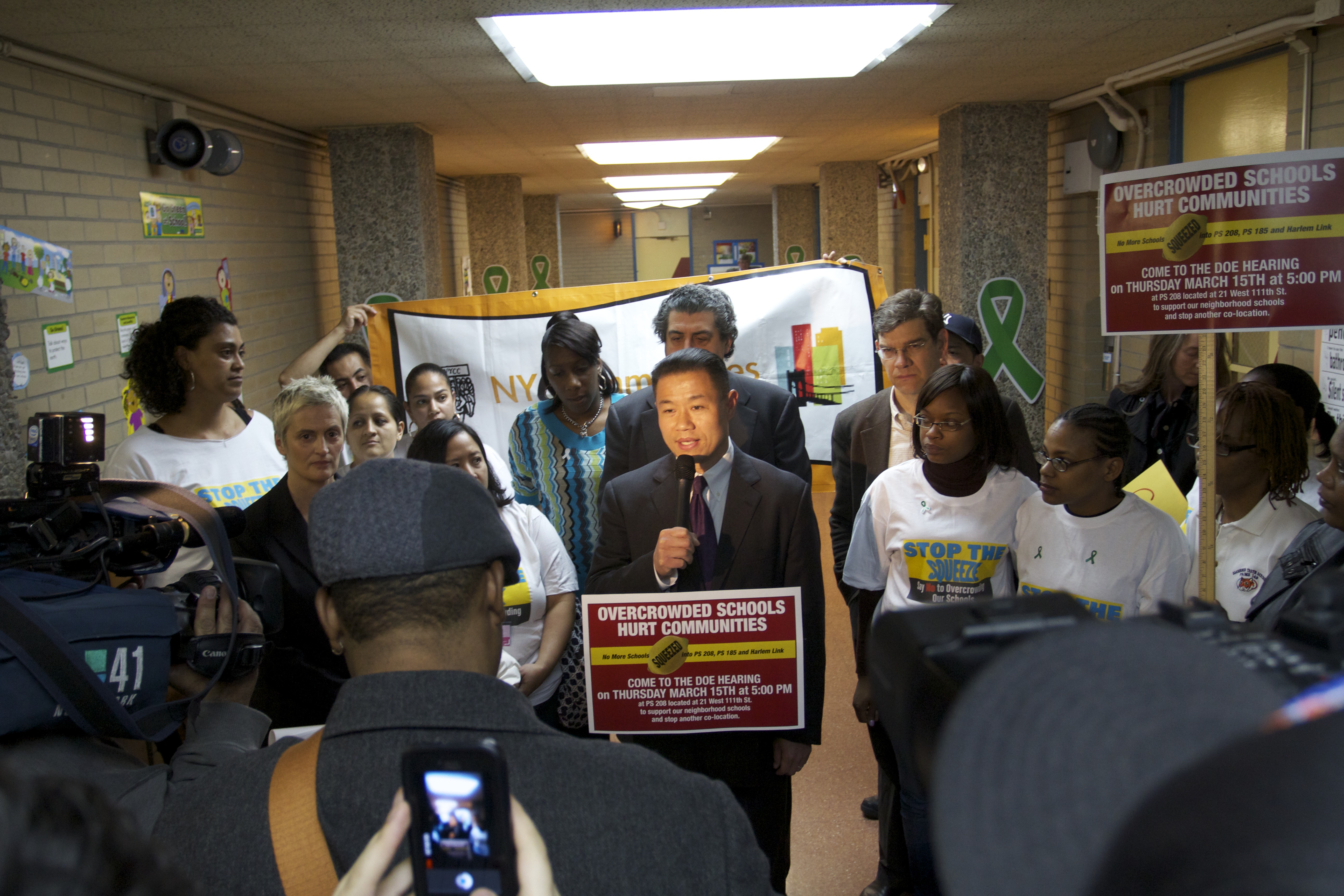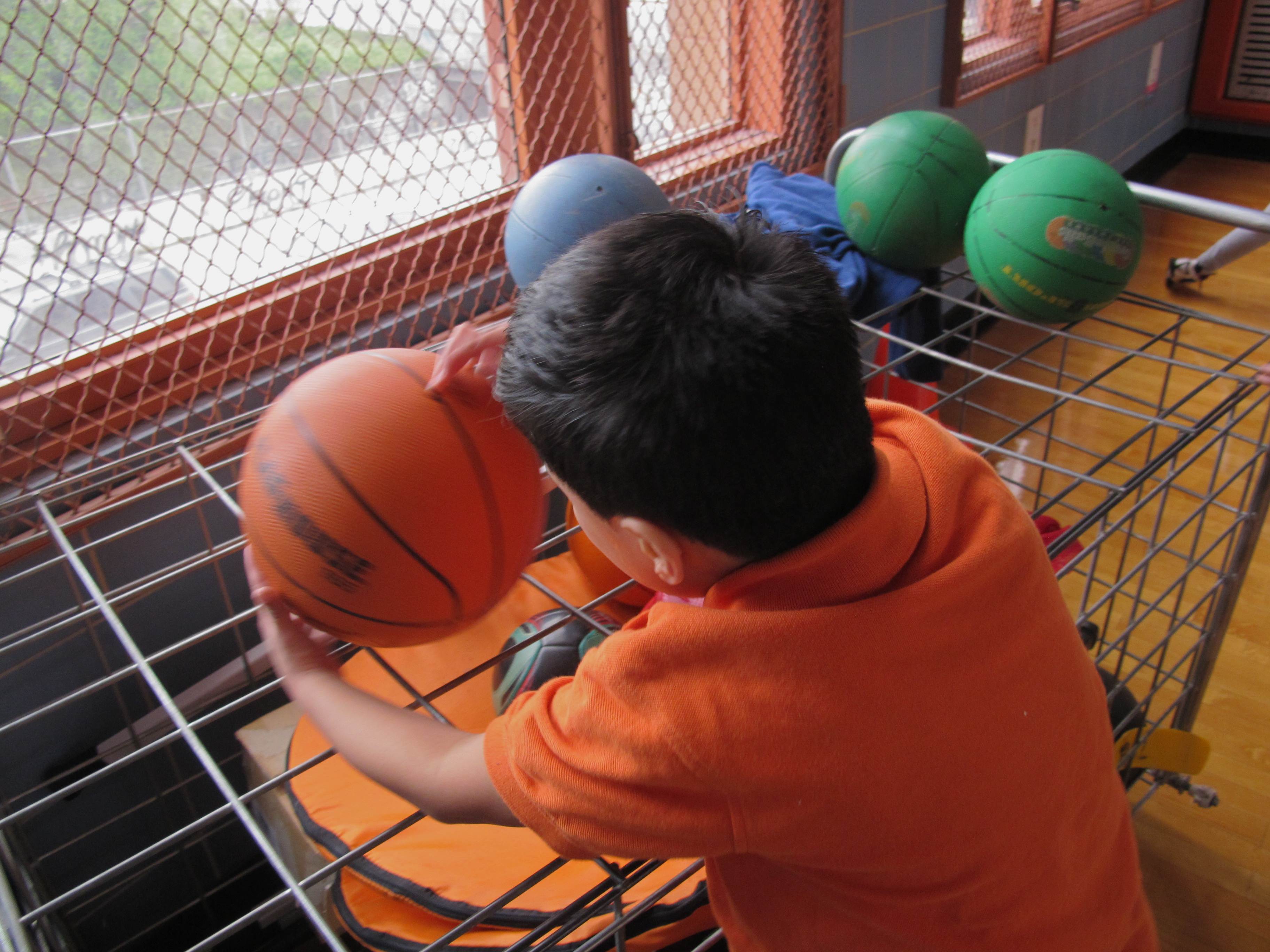On a late afternoon in March, Theresa Andrews waited anxiously for her 12-year-old daughter at the bus stop on Grand Avenue in Queens, a 15-minute walk from the city homeless shelter where she had been living with two of her daughters for the past few weeks.
Every half hour, a Q59 bus would pull up to the metal post, let off a loud huff and release its evening commuters. But seventh grader Janee did not get off the bus — not at 4:30 p.m., or at 5, or even at 6:30, as the evening chilled and the sun disappeared.
Andrews, a 41-year-old single mother who lost her retail job two years ago, called her three adult daughters, all of whom live in New York City. None knew the whereabouts of their little sister.
“I swear if I don’t find her I’m going to call every news station,” Andrews told them before walking 10 blocks back to the shelter, a washed-out, two-story building with a large sign reading Metro Motel.
There she found Janee, sleeping soundly in one of the room’s three twin-sized beds. After dozing off during the hour-long bus ride from I.S. 296 in Halsey, Brooklyn, the quiet middle schooler had gotten off one stop farther than usual and walked home.
Sleeping on the bus isn’t unusual for Janee, whose daily commute takes four hours roundtrip. Setting off from her shelter each morning in Newtown, Janee first walks 15 minutes, then catches a bus, transfers to the J train, and walks another 15 minutes to her school. The trip is tiring, and the 7th grader likes her rest.
More than 16,000 children currently live in New York City’s shelters. Half are school aged. Under national legislation — the McKinney-Vento Act of 2001 — school districts are required to ensure that their homeless situation doesn’t compromise their access to public education. But 11 years after the federal act was passed, the city reported last year that students living in shelters lagged behind their peers in school attendance; 19 percent of homeless students on average were absent every day, compared to 10 percent of students citywide.
Giselle Routhier, a policy analyst at the Coalition for the Homeless, said the long travel times from shelter to school are still posing huge struggles.
In New York, access to proper transportation for students may simply mean long rides on public trains and buses, sometimes with more than one transfer. Last year, the city placed 80 percent of homeless families in shelters within the same borough as their youngest child’s school. But in the outer boroughs, like Queens, where neighborhoods and subway stations are sometimes far apart, this doesn’t ensure a comfortable ride.
Applying for shelter and public assistance also often involves mandatory meetings with social workers, meaning more days out of school. “It’s very common for this to be a long drawn out process,” Routhier said.
For Janee Andrews, attending appointments at the intake center and moving from their home in Brooklyn to the Queens shelter resulted in missing two full weeks of school. And then making the long commute from the shelter didn’t help.
This isn’t Janee’s first experience with homelessness. Her family landed in a Bushwick shelter in 2009 after Teresa lost her job. They found a new apartment with the help of a city program called Advantage, a rent subsidy that moved thousands of families out of shelters. But in February, the Andrews became one of thousands of households to lose this support after the city cut Advantage.
The family soon reapplied for shelter. Andrews told a caseworker at the intake center that she hoped to stay in Brooklyn — a borough that she knew well, and where Janee went to school. Instead they were placed in Newtown, in an area without a convenient supermarket or laundry. The shelter also lacked a kitchen, though it provided cereal, sandwiches and dinners that Andrews complained were often still frozen.
Though that meant more than 28 hours of commuting per week for her daughter, Andrews didn’t consider switching Janee to a school closer by. It was the middle of the school year, and Janee received good grades at I.S. 296. Transferring would also mean leaving her friends. It was part of the mother’s efforts to keep life normal for her daughter — an effort that included a trip to the movies over Easter and long naps on weekends.
Routhier said many families, when faced between changing their child’s school and a long commute, choose to keep their children’s academic lives steady as Andrews did.
“If you already uprooted a kid to a shelter you don’t want to begin talking about changing schools,” she said.
Having lived at the shelter since early March, Janee said she sometimes doesn’t make it to school on time, and never before the first of two morning bells rings. She added that she never got in trouble. “Teachers like me — that’s why.”
And those occasions when her teachers do scold her, she said, it is usually for reading a book on a friend’s cell phone under the table. The middle schooler, whose favorite subject is English and Language Arts (ELA), reads with her mother in the shelter at night before going to sleep. The two often read books at the same time, like Harry Potter or The Hunger Games, and discuss them.
While Andrews hopes to live in an apartment again soon, the average length of stay in shelters has increased dramatically for families. In the first three months after the city cut off applications for the Advantage program, the length of stay jumped from 260 days to 303 days.
Meanwhile, as one of these students, Janee does her best to live a normal life at school. Even her closest friends don’t know she and her mother are currently at a shelter — a fact she avoids by not calling her friends over, and keeping her lips locked about the situation.
“It doesn’t come up,” she said, before adding, “It’s embarrassing.”




As more and more parents decide to home school their kids, there is a constant need to have a structured method to proceed with. Although, most parents would love to home schooled their kids, they have to be more aware that bring up a child is going to be tough and of course meaningful. It is a hard task for any parent, whether they have an academic background or not; because it the future of your child and due to the high responsibility many parents overdo the teacher’s job.